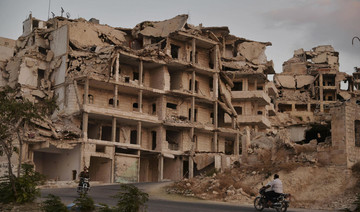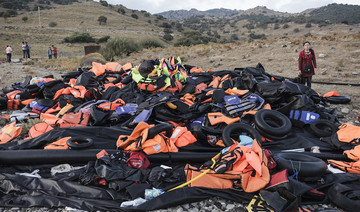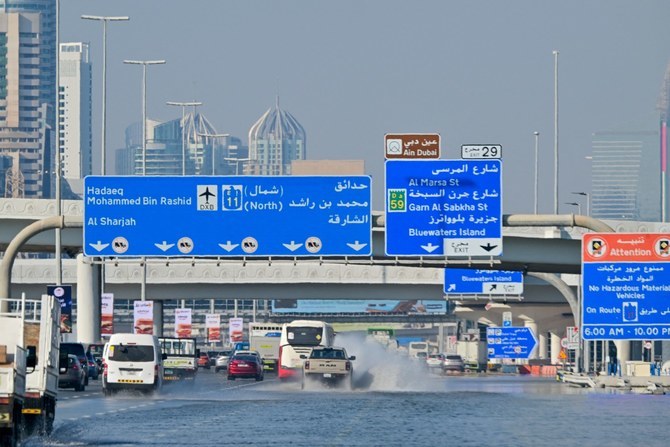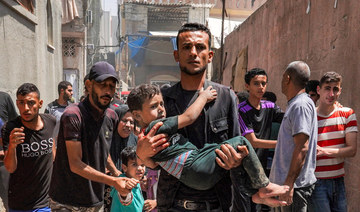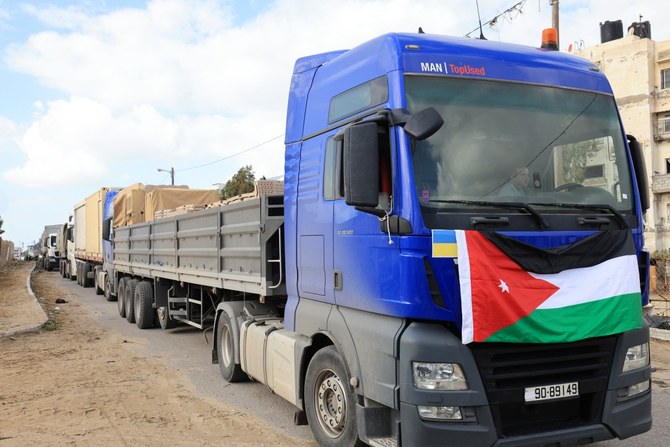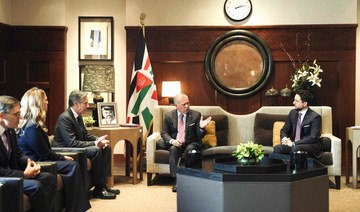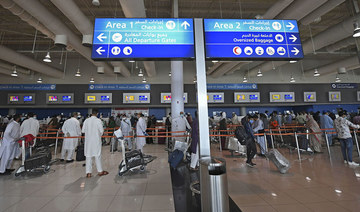NEW YORK: While Syria’s regime is encouraging refugees to return to their war-wracked country, the UN’s top official there said that the millions who fled need to evaluate for themselves whether it’s safe and feasible to go home.
“Some areas in Syria will look, to the onlooker, safe,” the UN resident humanitarian coordinator for Syria, Ali Al-Za’tari, said at a news conference at the world body’s headquarters.
“A refugee has to have a feeling of safety and security, a way to lead a living back in Syria, and a roof.”
After more than seven years of civil war that uprooted nearly half Syria’s 23 million people and killed over 400,000, the regime says military gains over the past year have made it safe to return.
“All conditions are now present for the voluntary return of Syrian refugees,” Foreign Minister Walid Al-Moallem told the UN General Assembly on Saturday. “Doors are open.”
The UN, however, is stopping short of urging all Syrians to return.
Al-Za’tari said the organization also is not telling refugees to stay away but believes they should “assess the situation for themselves before making a decision to come back.”
If they do, the UN stands ready to help them, he said, though it so far has received about 45 percent of some $3.4 billion requested for providing humanitarian aid in Syria this year.
About a million people have ventured back to their homes in Syria, mainly from other parts of the country, Al-Za’tari said. The Syrian regime has put the figure at 3.5 million.
Still, by the UN’s count, more than 5 million Syrian refugees remain in other countries, and about 6.2 million displaced Syrians are living within the country but away from their homes.
Some have nowhere to go after their homes and businesses were destroyed. Some who have left the country fear mandatory conscription or reprisal from government forces if they return.
The fighting has ebbed in many areas, with the regime now holding just over 60 percent of Syria’s territory. The rest is largely controlled by US-backed and Kurdish-led forces, opposition fighters allied with Turkey, and insurgent groups.
The last remaining rebel stronghold, Idlib province, was on the cusp of becoming a battleground before Russia and Turkey reached a deal last month to set up a demilitarized zone by Oct. 15.
The agreement averted a looming Syrian military offensive that UN officials feared could become a massive humanitarian crisis, since Idlib has become a relative haven for people who fled fighting elsewhere in Syria.
Seeking to show that Syria is turning a page on years of bloodshed and destruction, the regime and key ally Russia have been spotlighting efforts to repair schools, hospitals and other vital infrastructure. And regime officials have said that bringing refugees back is a priority in rebuilding the country.
The UN’s Al-Za’tari said on Thursday that at least 500,000 people have returned to eastern Aleppo, where a 2016 battle destroyed half the city. An estimated 120,000 are back in Raqqa, he said, despite the lingering dangers of land mines and unexploded ordnance in the city that Daesh extremists seized and made the seat of their self-proclaimed caliphate in 2014.
The Russian military said late last month that over 3,000 Syrians had returned to their homes in various parts of the country just within a week.



